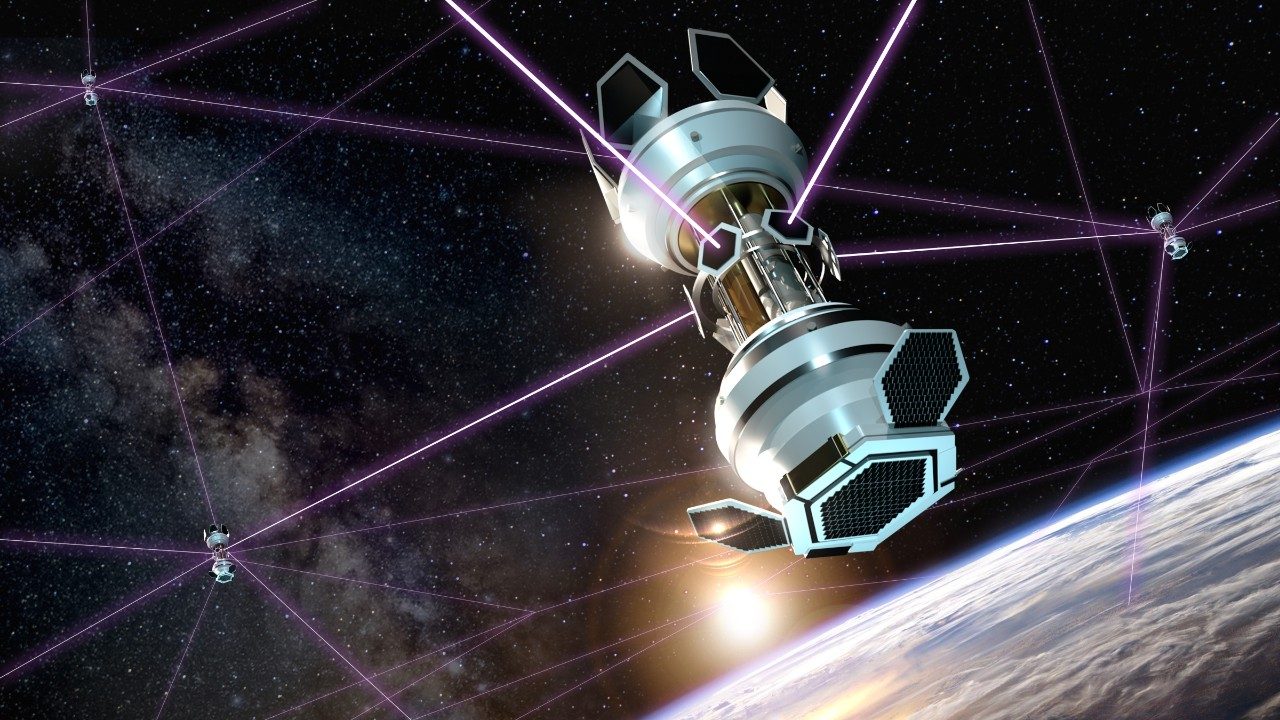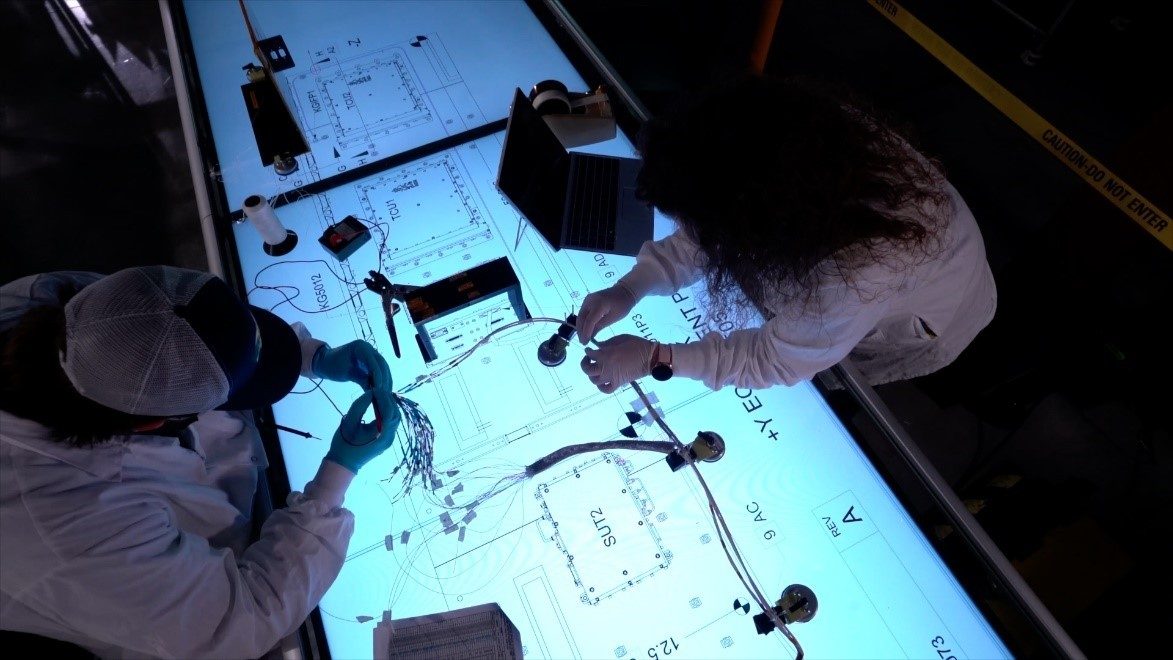“It’s all about detection and response times…and that means speed.”
When you hear about “speed” and “response times,” you may imagine an ambulance or a hospital’s fast-paced emergency room, but for Dr. Sarah B. Hiza, vice president and general manager for Strategic and Missile Defense Systems (SMD) at Lockheed Martin, those terms reference another lifesaving, critical mission.
Sarah’s organization leads many of our nation’s top strategic deterrent and missile defense programs to equip the military to protect the security of today and the safety of tomorrow. Her programs trace back to the Cold War in the early 1950s when what is now Lockheed Martin Space partnered with the Navy on the first fleet ballistic missile program as part of our nation’s nuclear triad of strategic deference. Around the same time, the company also partnered with the U.S. Air Force to create the first generation of intercontinental ballistic missiles (ICBMs): the Atlas and Titan missiles. Fast forward to today, her team is committed to delivering a vast portfolio of reliable and cutting-edge systems to deter threats from occurring, defend against threats if needed, and when necessary, defeat threats to keep us safe.
With a rich history of critical programs and decades of successful test launches and flights, what does the future of missile technologies look like?
“As we move forward, everything will be about time and speed."

Lockheed Martin Space is embracing change and continuing strong partnerships with our customers to lean into smart risk-taking to deliver missile defense systems faster – and more capable – than ever before.
“Because of our experience in this sector, we understand the challenges that can come with design, development and production like no one else,” explained Sarah. “This allows us to make informed decisions when taking risks.
“For example, we leverage the one-way door or two-way door decision concept. Mission success would be a one-way door, meaning it’s a decision that we cannot go back on, so we must make it through those critical criteria to ensure performance and reliability. However, some decisions are a two-way door, where you can step through it or step back and change course if needed. Understanding the difference allows us to try new things.”
Taking Risks; Gaining Speed
Driven by an increasingly competitive business climate and new customer needs, Lockheed Martin is leaning forward to embrace a new risk posture and new ways of working – including digital transformation – but we’re not doing it alone.
“Our customers are walking alongside us.,” said Sarah. “They know what decisions we made along the way and why. They were there all along, going through a couple decisions at a time.”
But what does this mean for developing the next generation of missiles?
The process and development timeline of the past is no longer relevant in support of the warfighting domain and needs of the future . As new systems are designed and developed, teams need to adopt an accelerated development process to move the cycle even faster.
“Our military customers need capabilities much faster, and because of that, we are using more agile, iterative methods to accelerate our development cycle to fail early, fail fast, and learn often through prototypes and early hardware,” Sarah shared. “For example, we use rapid prototypes like 3D printing and early hardware builds to inform our decisions."
Next-Generation Capabilities Will Change Our Nation’s Defense
To know why speed is so important, we need to take a step back to recognize what these capabilities really mean for our nation and our military. Missile systems are some of our nation’s strongest assets. Specifically, hypersonic capabilities improve the warfighter’s response time in strike scenarios, reduce the adversary’s time to counter and react, and provide a deterrence capability by holding the adversary’s most valuable targets at risk. As a part of the adversary’s capability, we need to think through what ballistic missile defense looks like – and that is where the Next Generation Interceptor (NGI) comes into play.
NGI is the new, modern and revolutionary capability to address both current and future ballistic missile threats as part of the Missile Defense Agency (MDA)'s Ground-Based Midcourse Defense (GMD) system. Establishing a never-fail defense as ICBM threats from rogue nations grow and evolve requires new and adaptable technology that will provide a unique combination of strategic systems, hit-to-kill and national security space domain expertise.
“If a rogue nation were to become so bold as to attack the U.S., the GMD system would engage and NGI would intercept their incoming threats,” Sarah explained. “The MDA has fielded an earlier generation of capability in that area today, but NGI will take us to the next level of defense, putting our warfighters in a stronger position to protect our homeland.”
Leveling Up the Workforce of the Future and Digital Transformation
“We’re introducing new materials and new ways of integrating the latest sensor technology to provide much more advanced capabilities – and information – to the warfighter,” Sarah explained. “Digital transformation is the key to integrating all the different systems and platforms. Today, many of our weapons and warfighters in separate services are siloed. As we digitally transform, we have a ‘modular capability’ to interface across services, weapons and platforms.”
With the assistance of AI, these different systems will be able to rapidly analyze and communicate critical information to the warfighter faster than ever before – but it is important to remember that humans will also remain in the loop.
“The level of human judgement will never be completely removed from the warfighter and our military leaders,” said Sarah. “AI can be an enabling tool to process data even faster, but things like policy and geopolitical dynamics will always play into the need for human judgement and critical decisions to support these missions.”
The future warfighter – and workforce – will contribute critical skills, and in tomorrow's world, information, tools and technology will continue to rapidly evolve, so we need to be ready to learn new things.
“We need a workforce that has a ‘growth mindset’ to learn new processes, try new things and quickly master new tools,” described Sarah. “Providing more digital exposure gives our employees a broader skillset, so they can more easily adapt as new technology rolls out.”
What Could the Future Look Like?
How Lockheed Martin applies innovation and risk to overcome the limitations of time and schedule is shaping the future of missile technologies, today.
“By leveraging our company’s long history and experience, we are already leaning into risk and digital tools – and that is how we will speed past our competition and deliver robust capabilities for our customers,” said Sarah.
“Our experience, leveraged correctly, is a superpower.”
Follow Sarah Hiza on LinkedIn
Looking to learn more about how Lockheed Martin is leveraging speed and innovation to revolutionize missile defense, national security missions and new business models? Tune into Lockheed Martin Space Makers, available everywhere you listen to podcasts.








